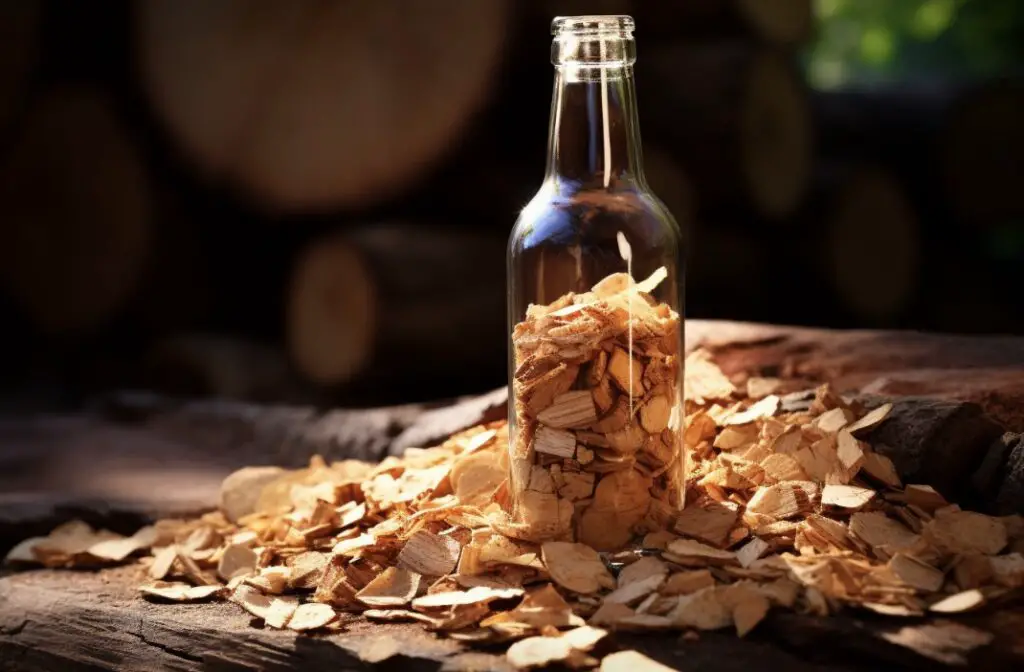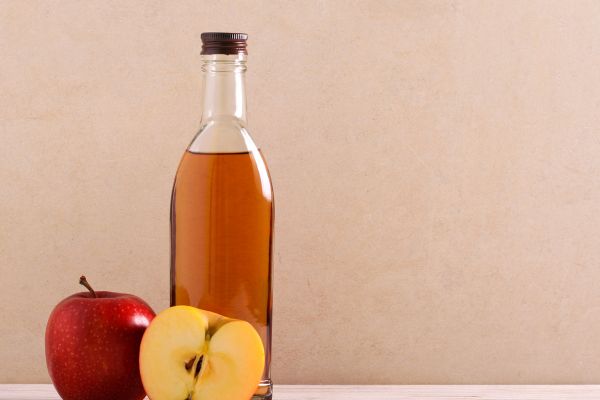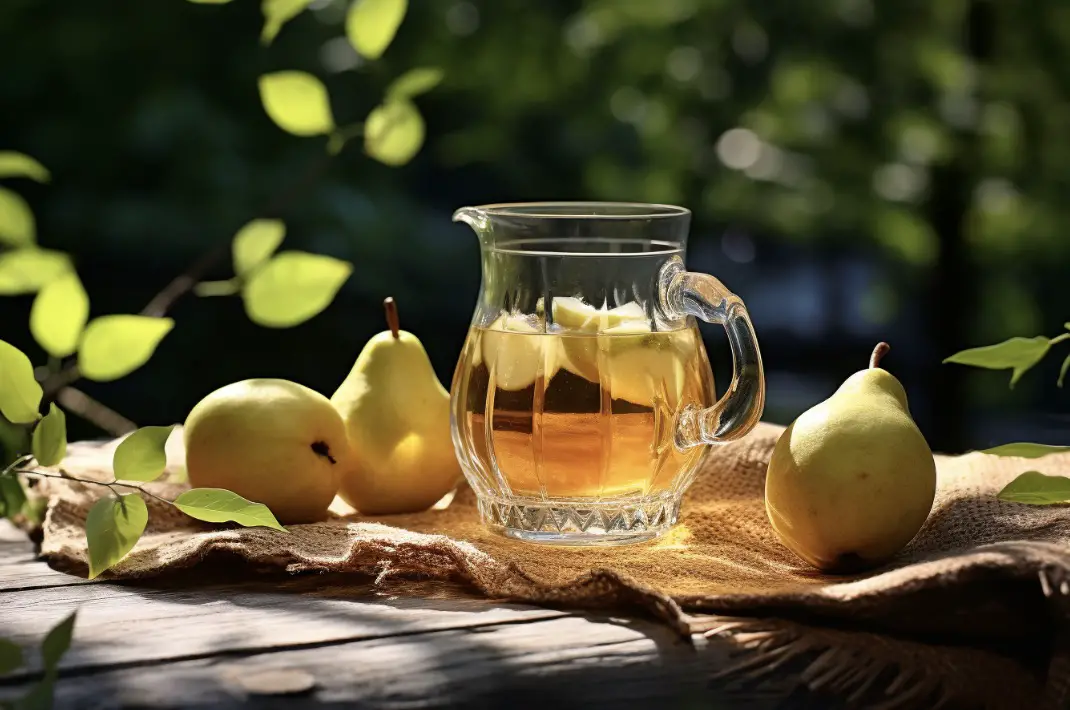As a cider enthusiast, are you looking to enhance the flavor of your homemade brew?
Adding tannin to cider can make a significant difference in the taste and mouthfeel of your final product.
In this comprehensive guide, we will explore what tannin is, the different types available, why it is important in cider making, and how to incorporate it into your recipe.
We’ll also cover the dos and don’ts of adding tannin, common mistakes to avoid, and how it affects the overall flavor profile of your cider.
So, grab a glass and let’s get started on perfecting your cider-making skills!
What Is Tannin?
Tannin is a natural compound found in various sources such as oak chips, tea leaves, grape skins, and apple pomace, known for its ability to add complexity and mouthfeel to cider through chemical reactions.
In cider making, tannins play a crucial role in shaping the overall flavor profile. Natural tannins, derived from sources like apple skins or seeds, impart a subtle astringency that can enhance the structure and balance of the cider.

This natural tannin presence is often preferred by traditional cider makers for its authenticity and nuanced effects on the drink.
On the other hand, commercial tannins, which are sometimes used to supplement or modify the tannin content in cider, may provide a more standardized result but lack the depth and character of their natural counterparts.
What Are Some Good Sources of Tannins for Cider Making?
The different types of tannin used in cider making derive from various sources such as oak chips, tea leaves, grape skins, and can be classified into natural tannins found in ingredients and commercial tannins available for purchase.

Oak chips, for example, impart a subtle woody essence and a hint of vanilla to the cider, while tea leaves offer a more delicate bitterness.
On the other hand, grape skins bring a robust tannic structure that adds depth and complexity to the final product. It’s important for cider makers to understand the nuances of each tannin source to achieve the desired flavor profile.
Commercially produced tannins, although convenient, may lack the complexity and subtlety of natural tannins, making ingredient selection a crucial aspect of cider production.
Classic cider apple varieties and their tannin content
The best way to add tannins to your cider is perhaps to consider the apples used.
Classic cider apple varieties are cherished for their unique flavors, aromas, and tannin content, which contribute to the complexity of traditional cider production.

Tannins are polyphenolic compounds found in various plants, including apples, and are responsible for the astringent taste often associated with certain fruits, teas, and wines.
In cidermaking, tannins play a crucial role in providing structure, mouthfeel, and balance to the finished product.
Here are some classic cider apple varieties renowned for their natural tannin content:
Bittersweet Apples:
- Dabinett: Originating from England, Dabinett apples are highly esteemed for their bittersweet flavor profile and moderate tannin levels. These apples contribute depth and complexity to ciders, balancing sweetness with astringency.
- Kingston Black: Another English variety, Kingston Black apples are prized for their intense tannins and rich, spicy flavor. They add depth and character to ciders, often used in blends or as a single varietal cider for their distinctive taste.
- Yarlington Mill: With a perfect balance of sweetness and acidity, Yarlington Mill apples are valued for their high tannin content and fruity aroma. They lend ciders a smooth, rounded mouthfeel and a lingering finish.
Bittersharp Apples:
- Medaille d’Or: Originating from France, Medaille d’Or apples are known for their bittersharp flavor profile and high tannin levels. They contribute acidity, bitterness, and astringency to ciders, enhancing complexity and structure.
- Harry Masters Jersey: Named after its English discoverer, Harry Masters Jersey apples are prized for their sharp, tannic qualities and complex flavor profile, featuring both sweetness and acidity. They add depth and character to ciders, particularly in traditional English styles.
Sharp Apples:
- Foxwhelp: A classic English cider apple variety, Foxwhelp apples are characterized by their sharp acidity and high tannin levels. They impart a bold, tangy flavor to ciders, balancing sweetness and adding depth.
- Michelin: Originating from France, Michelin apples are renowned for their sharp, acidic taste and moderate tannin content. They contribute brightness and structure to ciders, particularly in blends where acidity is desired.
These classic cider apple varieties are favored by cidermakers for their unique flavor profiles and tannin content, allowing for the creation of well-balanced, complex ciders. By carefully selecting and blending different apple varieties, cider producers can craft beverages with a wide range of flavors and characteristics, appealing to various palates and preferences.
Why Is Tannin Important in Cider Making?
Tannin plays a crucial role in cider making by enhancing flavor, balancing acidity, and contributing to the overall complexity of the brew, making it a key component for both professional cider making and homebrewing.
In the fermentation process, tannin acts as a natural preservative, aiding in the stabilization of cider and extending its shelf life.
Tannin helps in clarifying the cider, resulting in a clear and appealing appearance. Different cider styles, such as traditional English ciders or modern craft variations, rely on tannin to provide distinct characteristics that cater to diverse consumer preferences.
Enthusiasts often appreciate the depth and body that tannin adds to the cider, while professionals value its role in achieving the desired flavor profile and balance.
What Does Tannin Do in Cider?
Tannin in cider contributes to the fruitiness of the drink, influences the characteristics of the ingredients used, and aids in tannin extraction during the cider making process.
By interacting with the sugars and acids present in the cider, tannins play a crucial role in shaping the overall flavor profile. These compounds are responsible for that slight astringency often associated with cider, which balances the sweetness and acidity.
Tannins can come from various sources like apples, oak barrels, or even added tannins from fruits such as blackberries or cherries, contributing to the complexity of the drink. Through careful extraction methods, cider makers can manipulate tannins to enhance the mouthfeel and create a well-balanced and flavorful product.
How to Add Tannin to Cider?
Adding tannin to cider can be achieved through various methods such as using tannin powder, tablets, or incorporating tannin-rich ingredients, with dosage, timing, and experimentation being key factors to consider.
- Tannin powder is a popular choice due to its convenience and ease of use, allowing for precise control over the tannin levels in the cider.
- Tablets offer a straightforward option for those looking for a quick and easy way to add tannin.
- Alternatively, incorporating tannin-rich ingredients like apple peels or grape skins during the cider-making process can impart a natural complexity to the final product.
Experimenting with different tannin sources and quantities can help cider makers tailor the taste and mouthfeel of their cider to achieve the desired profile.
Using Tannin Powder
One way to add tannin to cider is by using tannin powder, a process that involves specific steps and the utilization of suitable equipment, ensuring the selection of quality tannin sources.
To begin the process, ensure you have the necessary equipment including a measuring scale, a stirring rod, a sanitized container, and a siphon tube for transferring the cider.
Next, measure out the required amount of tannin powder based on your recipe or desired taste profile. Gradually add the tannin powder to the cider while stirring continuously to ensure even distribution. It’s crucial to choose high-quality tannin sources such as grape skins, oak chips, or commercial tannins for a balanced flavor.
The tannin addition should be done in moderation, as excessive tannins can result in a bitter taste.
Using Tannin Tablets
Incorporating tannin tablets into cider involves specific steps, necessitates the utilization of proper equipment, and requires the selection of high-quality tannin sources for the desired flavor profile.
One key step in utilizing tannin tablets effectively is to dissolve them in a specific amount of water to ensure even distribution throughout the cider. This process may require the use of a reliable measuring cup or scale to accurately determine the tannin tablet dosage.
It is essential to monitor the cider’s pH levels during tannin incorporation to maintain optimal conditions for fermentation. By choosing premium tannin sources derived from reputable suppliers, cider makers can enhance the complexity and structure of their final product, resulting in a more refined and balanced flavor profile.
Using Tannin-Rich Ingredients
Utilizing tannin-rich ingredients for cider making involves specific steps, the use of appropriate equipment, and the selection of quality tannin sources to achieve the desired flavor and mouthfeel.
- One crucial aspect of incorporating tannin-rich ingredients in cider production is the need to carefully control the extraction process. This involves macerating the chosen tannin sources, such as apple pomace, grape skins, or oak chips, in the cider to allow for gradual infusion of the compounds.
- Proper equipment, like crushers or presses, is essential to extract tannins effectively.
- Premium tannin sources enhance the cider’s complexity and structure, resulting in a more balanced and nuanced taste profile that can elevate the overall cider-drinking experience.
What Are the Dos and Don’ts of Adding Tannin to Cider?
When adding tannin to cider, it is crucial to follow dos and don’ts to enhance the cider’s quality, considering factors like oak aging to optimize the tannin’s impact on flavor and mouthfeel.
Dos for adding tannin to cider include selecting quality tannin sources such as oak chips or powders for a more nuanced flavor profile. It is advisable to start with a small amount of tannin and gradually adjust to taste to avoid overpowering the cider.
Don’t add tannin directly into the finished cider; instead, dissolve it in a small amount of warm water before incorporating it. Oak aging can complement tannin addition by imparting subtle vanilla and spice notes, enhancing the complexity of the cider. Together, these techniques can result in a well-balanced and flavorful cider.
Dos:
In cider making, do focus on the quality of cider production to meet the standards of the cider industry while striving to create artisanal ciders that showcase unique flavors and characteristics.
By adhering to best practices in cider production, cider makers can ensure that their ciders not only meet industry standards but also resonate with enthusiasts who appreciate the art and craft behind each batch.
Crafting artisanal ciders involves a delicate balance of selecting high-quality ingredients, precise fermentation techniques, and a keen understanding of flavor profiles. This commitment to excellence contributes to the rich tapestry of cider culture, where each sip tells a story of tradition, innovation, and passion.
Don’ts:
In cider making, avoid overlooking the preferences of cider enthusiasts, disregarding opportunities to participate in cider competitions, and neglecting the essence of cider culture in crafting unique and appealing beverages.
It is crucial to understand that cider enthusiasts often have specific tastes and preferences when it comes to their favorite beverages. By acknowledging and incorporating these preferences into your cider-making process, you can create products that cater to a niche market effectively.
Engaging in cider competitions not only provides valuable feedback and exposure but also allows you to showcase your skills and innovation on a broader platform.
Embracing the rich cider culture that has been cultivated over centuries can inspire you to experiment with different flavors and techniques, leading to the creation of exceptional beverages that resonate with consumers.
What Are Some Common Mistakes When Adding Tannin to Cider?
Common mistakes when adding tannin to cider include using incorrect recipe variations, improperly incorporating tannin additives, resulting in undesirable flavor outcomes.
This misstep can significantly impact the overall taste profile of the cider, leading to a bitter or astringent flavor that may not align with the intended result. Mishandling tannin additives can create imbalance and mask the natural fruit notes, detracting from the complexity and depth of the final product.
To avoid these pitfalls, cider producers must pay close attention to the specific types and quantities of tannin used, as well as the timing and method of incorporation. Precision and experimentation are key in achieving optimal tannin integration for a well-rounded and harmonious cider.”
Using Too Much Tannin
One common mistake is using too much tannin in cider, affecting the balance and flavor profile, which is particularly crucial in professional cider making and experimentation with diverse cider styles.
Excessive tannin can overwhelm the delicate flavors of the cider, leading to a bitter or astringent taste that overshadows the natural sweetness and acidity. Achieving the right balance of tannin is essential to enhance the overall drinking experience, allowing different elements to harmonize smoothly.
Professional cider makers understand the importance of precision in controlling tannin levels to create a well-rounded product that showcases the unique characteristics of the apples used. Through careful experimentation, they can explore how varying tannin amounts influence the final taste, helping them craft exceptional ciders across a spectrum of styles.”
Not Using Enough Tannin
Insufficient tannin usage in cider, such as not incorporating enough from pomace during pressing or in the fermentation vessel, can lead to a lack of complexity and mouthfeel in the final product.
Without adequate tannin levels, the cider may end up tasting flat or one-dimensional, lacking the depth and richness that tannins provide. Tannins not only contribute to the flavor profile but also play a crucial role in the overall structure and balance of the cider.
By extracting tannins from the pomace during pressing and allowing them to develop during fermentation, cider makers can enhance the mouthfeel and create a more well-rounded product. The presence of tannins can add layers of complexity, adding astringency, depth, and a pleasing dryness to the cider.
Adding Tannin at the Wrong Time
Timing is critical in cider making, and adding tannin at the wrong stage, such as during racking or clarifying, can result in inconsistencies in flavor and quality, affecting the final product upon bottling.
Tannins play a crucial role in cider production, contributing to the overall mouthfeel and structure of the beverage. When added at the correct stage – typically during fermentation or blending – tannins can enhance the cider’s complexity and balance.
Introducing tannin too late, like during bottling, can lead to a harsh or astringent taste, jeopardizing the harmony of flavors. As cider matures, the timing of tannin addition becomes increasingly delicate, underscoring the need for precision and foresight in the brewing process.
How Does Tannin Affect the Flavor of Cider?
Tannin influences the flavor of cider by contributing to its aroma, imparting tasting notes, and interacting with the aging process to develop a distinctive and well-balanced taste profile.
When tannins are present in cider, they play a crucial role in not only shaping its sensory experience but also elevating its overall quality. The presence of tannins adds complexity to the cider, providing a layer of depth that enhances the drinking experience.
By influencing the aroma, tannins contribute to the overall perception of the cider, making it more enticing and intriguing to the palate. The interaction of tannins with the aging process results in a harmonious blend of flavors that creates a nuanced taste profile, appealing to cider enthusiasts and connoisseurs alike.
How Long Should Cider Be Aged After Adding Tannin?
Determining the ideal aging duration post-tannin addition is crucial for cider, as it affects taste, mouthfeel, and appearance, influencing the overall quality and flavor profile of the finished product.
The process of aging cider after integrating tannins is a meticulous art that requires patience and precision. Through this aging process, the tannins slowly meld with the cider, enhancing its complexity and depth of flavor.

Extended aging allows for the harmonization of the various elements, resulting in a more balanced and refined taste. The mouthfeel of the cider evolves during this period, becoming smoother and more velvety.
The appearance of the cider can transform, with colors deepening and clarity improving, creating an enticing visual appeal.
Frequently Asked Questions
What is tannin and why is it important in cider making?
Tannin is a natural compound found in plants like apples and grapes. It is responsible for giving cider its characteristic dry and astringent flavor. Adding tannin to cider can improve its overall taste and mouthfeel.
How do I know if my cider needs more tannin?
If your cider lacks a dry and astringent taste, it may be lacking tannin. This can result in a flat and unbalanced flavor profile. Adding tannin can help enhance the complexity and depth of your cider.
What are the different types of tannin that can be used in cider making?
There are various sources of tannin that can be used in cider making, such as oak chips, tea leaves, and grape skins. Each source can give a different flavor profile to your cider, so experiment to find the one you prefer.
How much tannin should I add to my cider?
The amount of tannin to add depends on personal preference and the type of tannin being used. It is recommended to start with smaller amounts and gradually increase until you achieve the desired taste.
Can I add tannin to my cider at any stage of the fermentation process?
Tannin can be added at any stage of the fermentation process, but it is best to add it during the primary fermentation. This allows the tannin to integrate better with the cider and create a more balanced flavor.
Are there any substitutes for tannin in cider making?
If you are unable to find tannin, you can use other ingredients to achieve a similar effect. Some common substitutes for tannin include raisins, black tea, or pomegranate juice. However, keep in mind that these may give a slightly different flavor to your cider.





Leave a Reply
You must be logged in to post a comment.